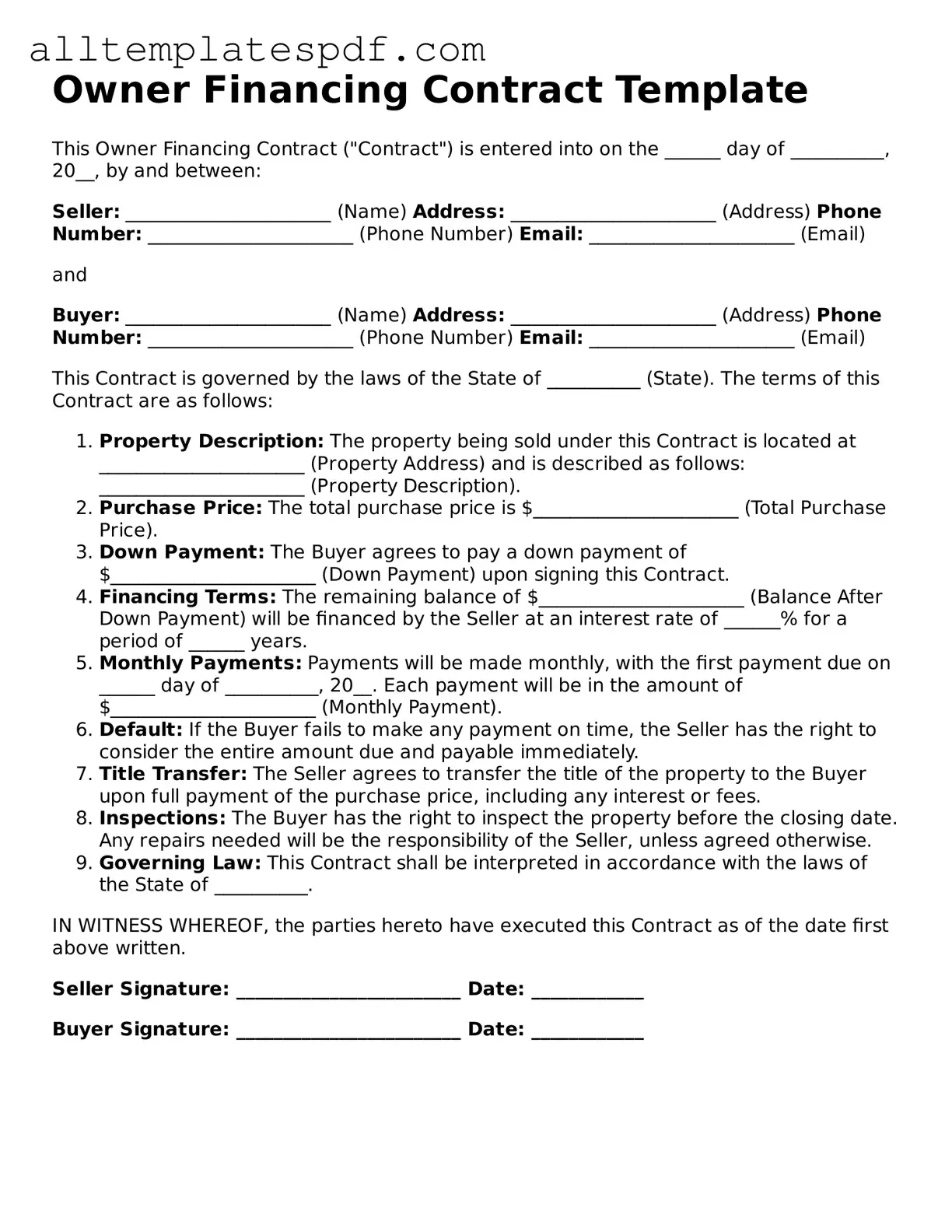Filling out an Owner Financing Contract form can be a straightforward process, but several common mistakes can lead to complications. One frequent error is failing to provide complete information. When individuals leave out essential details, such as the property address or the names of the parties involved, it can create confusion later on. Ensuring that all fields are filled out accurately is crucial for a smooth transaction.
Another mistake often made is misunderstanding the terms of the financing agreement. Some people may not fully grasp the implications of interest rates, payment schedules, or the total amount financed. This lack of understanding can lead to unrealistic expectations or disputes down the line. Taking the time to review and comprehend each term is important for all parties involved.
Inaccurate calculations can also pose significant issues. Errors in calculating monthly payments or total interest can result in financial strain. It is advisable to double-check all figures and, if necessary, seek assistance from a financial advisor or use a calculator designed for such purposes.
Omitting signatures is another common oversight. All parties must sign the contract for it to be legally binding. If one party forgets to sign, the contract may be rendered invalid. It is beneficial to have a checklist to ensure that all required signatures are obtained before finalizing the document.
Another mistake involves neglecting to include contingencies. Failing to outline conditions that must be met for the agreement to remain valid can lead to misunderstandings later. Including contingencies can protect both the buyer and seller, ensuring that all parties are aware of their obligations.
Some individuals also overlook the importance of including a clear description of the property. A vague or incomplete description can lead to disputes about what is being financed. Providing a detailed description helps to clarify expectations and responsibilities for all parties.
Lastly, people often forget to review local laws and regulations regarding owner financing. Each state has specific rules that govern these transactions, and not adhering to them can create legal issues. Researching local laws ensures that the contract complies with all necessary regulations, protecting both the buyer and seller.
